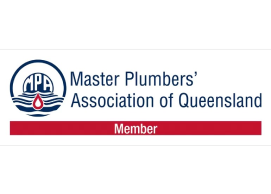Smart toilets and toilet bidets are becoming increasingly popular in Australia, with a variety of options available today.
However, it is imperative that you are aware of the requirements when it comes to the installation of bidets and smart toilets. You may not have noticed the regulations until now. For more information about bidets, smart toilets, and backflow prevention, please contact one of our qualified plumbers in Brisbane and Ipswich on 0406 071 659
What is a bidet?
A bidet is a bathroom fixture that is equipped with a device that produces a spray of water from a point below the rim of the pan.
Alternatively, you may have heard of a bidets, which is an air-gap sanitary fixture equipped with a shower head and an over-the-rim water outlet.
Exactly what is backflow?
Backflow occurs when unwanted contaminated water from a residential or commercial system finds its way into the main water supply. If contact is made between the contaminated water and the main supply, the main supply will become contaminated.
What causes backflow?
Backflow occurs when there is a sudden drop in pressure in the water main outside of your home (for example, a break in the system on your street). This may result in water being syphoned back into the public water main from the fixtures in your home (bidets, toilets, hoses, irrigation systems, etc.). The water that is syphoned back into the public water main could pollute your (and your neighbor’s) potable water system – and no one wants to drink water from their neighbor’s bidet!
Backflow prevention – what is it?
In order to prevent cross-contamination from occurring, backflow prevention devices are installed to prevent contaminated water from entering the main supply line.
Which types of backflow prevention are available?
Here are a few of the most effective methods for preventing backflow:
- Air gaps
- Break tanks
- Double check valves
- Reduced pressure zone device
- Pressure vacuum breaker
- Single check valve (testable)
- Double check valve detector assembly
- Reduced pressure zone detector assembly
- Single check valve detector assembly
What is the most effective way to determine which backflow prevention device to install?
In order to determine the type of backflow prevention device that is required, it will be necessary to determine the hazard rating of the source of contamination. Hazard ratings are determined in accordance with AS-NZS 3500-1 Section 4.3: Cross-Connection Hazard Ratings:
There are three types of hazard associated with cross-connections:
- High Hazard: Any condition, device, or practice associated with the water supply system that has the potential to cause death.
- Medium Hazard: Any condition, device, or practice associated with the water supply system that poses a risk to human health.
- Low Hazard: A condition, device, or practice that constitutes a nuisance but does not pose a threat to health or safety.
Backflow prevention regulations exist?
Backflow prevention in Brisbane and Ipswich requires consideration of a number of different legislative and regulatory documents
- Plumbing and Drainage Act 2011
- Plumbing and Drainage Regulation 2017
- Plumbing Code of Australia
- AS3500.
Backflow prevention and containment devices must be installed at all connections to our water and recycled water pipes. It is also advisable for a plumber to contact the Network Utility Operator if there are any requirements regarding Site Containment backflow devices.
Do toilet bidets and smart toilets require backflow prevention?
There is a requirement for a toilet seat douche or bidet to comply with AS/NZS 3500 Part 1 Water Services Clause 12.2.3.
A douche outlet that is installed at least 25mm above the overflow level of the pan does not require a backflow prevention device.
Whenever the douche outlet is less than 25mm above the overflow level of the pan, a backflow prevention device with a high hazard rating must be installed (see Figures 1 and 2). A device must comply with AS/NZS 2845.1 or AS 2845.2.
What is the hazard rating of toilet bidets and smart toilets?
As per AS 3500.1, toilet bidets and smart toilets are considered high hazards.
It is necessary to protect the drinking water supply from any potential hazards by installing the following:
- (a) Using a high-hazard backflow prevention device at every toilet douche seat connection;
- In addition, the water supply line to each toilet douche seat connection is equipped with a high-hazard backflow prevention device, and this line is connected separately to the main drinking water supply.
Regardless of the situation, the connection point for the bidet outlet must come from the drinking water supply. It is not possible to use non-drinking water for this purpose.
Why do toilet bidets need backflow prevention?
A major factor causing the requirement for backflow prevention devices on toilet bidets and smart toilets is the quality of the water. This is for the health of those who use it. When backflow devices are not installed, water can be contaminated, resulting in serious health problems for people.
Who can install a backflow prevention device?
Only a plumber who is appropriately qualified and licensed can install a backflow prevention testing device.
Are there testing requirements for backflow prevention devices?
Yes. The following high and medium hazard devices must be tested by your accredited backflow plumber:
- When the system is installed
- After the device is installed, every year
If you would like more information regarding backflow prevention and the services we offer, give Pauls Plumbing a call on 0406 071 659 Plumbing.



